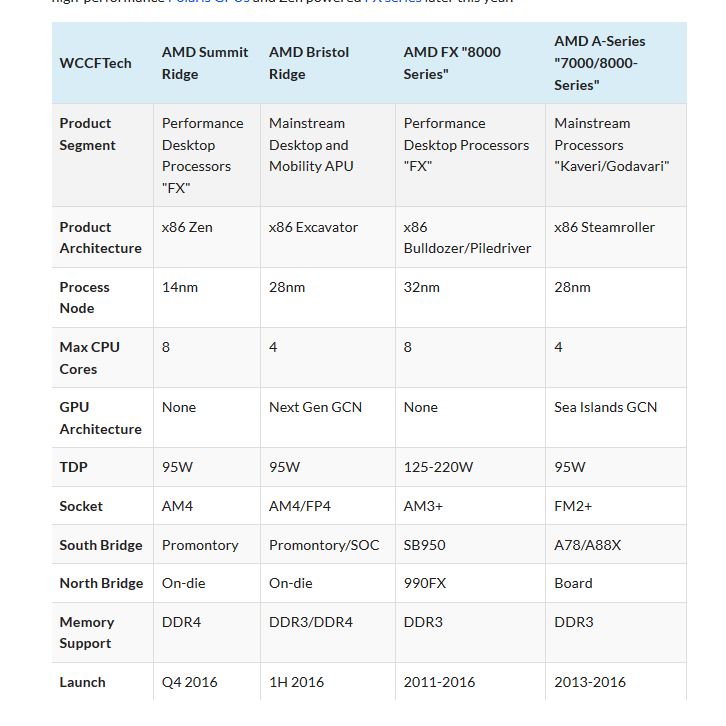you still haven't given me any reference for your rhetoric, your just repeating it.
Where are the iGPU clock rates of Carrizo?
where are the Carrizo vs kaveri memory performance figures?
where is this wide selection of Carrizo gaming performance?
It's hard when I don't own the hardware Humbug but from the slides it's clear Carrizo is mobile only. 28shp isn't very good for clockspeeds, but it has the advantage of density compared to intel 22nm and tsmc 28nm.
HDL is used in Carrizo, it's putting more metal layers/transistors 3.1 billion (i think it's 8-9 layers) inc the southbridge into in a die area of 244mm2. Kaveri is 2.4 billion at 245mm2. The difference is these transistors (mostly for the gpu) are denser and tightly packed and so I predict the power consumption and thermal limits will constrain the top end headroom of overclocking. It doesn't mean it won't scale but it will require 65w-95w and then are the performance gains really worth it, this is my point (even if you increase the tdp to 95w for the desktop is it enough gpu performance to provide a substantial gain over Kaveri at 1080p or even intel pro 6200 when the weak point is shared ddr3? (We don't know but we will try and find out).
The excavator cores are 23% smaller than steamroller cores (are these refined for efficiency and less for performance?) . Also Carrizo features an advanced AVFS which is continually adjusting for the tdp via clocks speeds and voltages so this would need to be looked at for overclocking.
L1 cache is doubled to 64k per module, but l2 cache is reduced to 1mb per module. But the traces are smaller so logic and latency overall should be improved.
The same can be thrown back to you, Why do you think Carrizo can scale in clockspeed and provide a substantial performance increase which will be able to provide the 1080p experience from an igp that we have been waiting many years for? Why are you so against the fact the Carrizo is purely for mobile and that i'm out of my depth, when neither of us can prove it at the moment.
Let's look at it logically, why didn't Steamroller make it onto am3+ 32nm or am3+ 28nm ?
Ok why didn't excavator make it onto fm2+ 28nm. Why have we got Godaveri which is a p-state refined kaveri.
( I'm fairly confident why)
Kaveri bios and p-states in early models were affected badly by tdp limits.
For a 7850k Max clocks on all cpu cores on desktop Kaveri is 3ghz when the 720 mhz gpu is fully utilized.
There is a way around it but reviews and benchmarks will normally show throttled results. For example 7850k usually quoted as 2100 when it's potential is around 3000+
Where are the iGPU clock rates of Carrizo?
carrizo clock speeds = 720mhz to 800mhz
where are the Carrizo vs kaveri memory performance figures?
give it time.
where is this wide selection of Carrizo gaming performance?
give it time.
Whilst the thermal limits was my own theory, this link provides insight into carrizo and states the clock speeds, but I can't confirm if they are true.
http://arstechnica.co.uk/informatio...sixth-time-lucky-amd-details-the-carrizo-apu/
edit i edited the shared ddr3 bit




